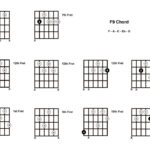Spaghetti alla Chitarra, often called Guitar Spaghetti, isn’t just another pasta dish; it’s a culinary experience deeply rooted in Italian tradition. Originating from the Abruzzo region of central Italy, this unique pasta gets its distinctive square shape and porous texture from a special tool known as the “chitarra,” or Pasta Guitar. While you might find similar pasta variations like Tonnarelli or Troccoli across Italy, the authentic Spaghetti alla Chitarra, crafted with a pasta guitar, holds a special place in Italian gastronomy.
What is a Pasta Guitar?
The pasta guitar is a traditional culinary tool, primarily used in Abruzzo and other Adriatic regions of Italy. Imagine a wooden frame strung with fine stainless steel wires, resembling a musical instrument – hence its name. This ingenious device is designed to cut pasta sheets into perfectly square strands, approximately 2mm per side. The resulting pasta boasts a slightly rough, porous surface, which is key to its culinary appeal. This texture allows sauces to cling beautifully, enhancing every bite of your pasta dish. To create the ideal dough for your pasta guitar, the classic recipe calls for simple ingredients: durum wheat semolina, fresh eggs, and a pinch of salt.
Using Your Pasta Guitar for Perfect Spaghetti
Once you’ve prepared your pasta dough and allowed it to rest, the next step is bringing your pasta guitar into action. Roll out the dough into a sheet about two millimeters thick. Position this sheet on top of the pasta guitar, ensuring it covers the strung area. Then, take a rolling pin and firmly roll it across the dough, pressing it down onto the strings. With a satisfying motion, the taut strings of the pasta guitar will slice through the dough sheet, transforming it into uniform strands of square spaghetti, ready to be cooked and enjoyed.
Caring for Your Pasta Guitar Cutter
If you’re new to using a pasta guitar cutter, a simple cleaning before the first use is recommended. As the frame is typically made of wood, a porous material, avoid harsh chemicals. For regular cleaning and maintenance of your pasta guitar for spaghetti, natural solutions work best. Vinegar, baking soda, or lemon juice mixed with salt are excellent for cleaning both the wooden frame and the steel strings. After cleaning, rinse with warm water and thoroughly dry with a soft cloth. To ensure longevity and prevent any unwanted odors or mold, always clean your pasta guitar after each use, allow it to air dry completely, and store it in a well-ventilated area. This simple care routine will keep your pasta guitar in top condition for countless pasta-making adventures.
(Note: Please provide image URLs if you want images to be included. Assuming there are images from the original article, placeholders for image insertion would be placed here based on the content flow described above. I will create alt text once images are provided.)

